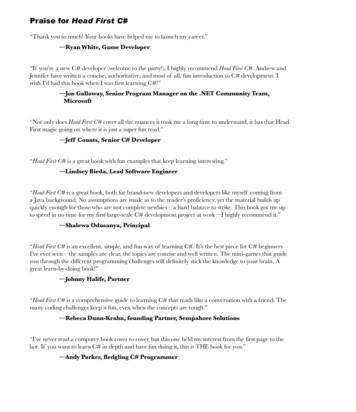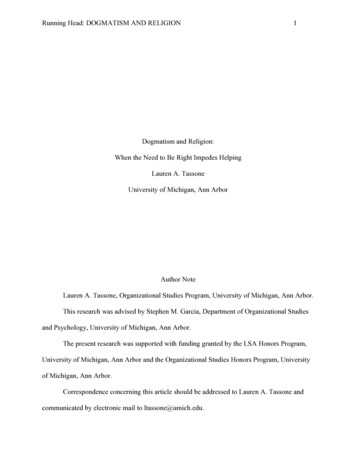
Transcription
Running Head: DOGMATISM AND RELIGION1Dogmatism and Religion:When the Need to Be Right Impedes HelpingLauren A. TassoneUniversity of Michigan, Ann ArborAuthor NoteLauren A. Tassone, Organizational Studies Program, University of Michigan, Ann Arbor.This research was advised by Stephen M. Garcia, Department of Organizational Studiesand Psychology, University of Michigan, Ann Arbor.The present research was supported with funding granted by the LSA Honors Program,University of Michigan, Ann Arbor and the Organizational Studies Honors Program, Universityof Michigan, Ann Arbor.Correspondence concerning this article should be addressed to Lauren A. Tassone andcommunicated by electronic mail to ltassone@umich.edu.
DOGMATISM AND RELIGION2AbstractIn two correlational studies, I examine the relationship between religious dogmatism and helpingbehaviors. I hypothesize that there is a negative relationship between people’s level ofdogmatism and their likelihood of exhibiting helping behaviors toward other religiousorganizations and secular organizations. I also hypothesize that this negative relationship existsbetween nonreligious people’s level of dogmatism and their likelihood of exhibiting helpingbehaviors toward religious organizations. In Study 1 (N 190), I found a negative correlationbetween religious people’s level of dogmatism and their likelihood of donating to a secularorganization. In Study 2 (N 300), I found a similar pattern of results among nonreligiousdogmatists: atheist and agnostic participants’ level of dogmatism was negatively correlated withtheir likelihood of donating to a religious organization. The results indicate that religiousdogmatism may impact helping behaviors in ways that previous social identity research has notexplored. Individual tendencies toward social comparison, preferences for like-minded others,and/or past exposure to diverse worldviews could be explanations for these results, among otherexplanations. After presenting the following research, I discuss the implications and limitationsof the findings and give ideas for future research.Keywords: dogmatism, religious perspectives, prosociality, collective action,organizations, helping behaviors, charity, religiosity, generosity
DOGMATISM AND RELIGION3Dogmatism and Religion: When the Need to Be Right Impedes HelpingStudies show that religion has a myriad of prosocial benefits. Religion can play a role inpromoting health and preventing obesity (Horton, 2015). People who consider themselves to bereligious tend to rate themselves as having better physical and mental health (Reyes-Ortiz,Pelaez, Koenig, & Mulligan, 2007). Religion can contribute to increased mental health bypromoting positive coping, positive beliefs, and the experience of community and support(Weber & Pargament, 2014). Religion is even positively correlated with happiness (Steiner,Leinert, & Frey, 2010). While some studies find mediating variables in the relationship betweenreligion and health, there is still overwhelming evidence that organizational religiousinvolvement is positively correlated with mental health (McFarland, 2010). Religiousorganizations and their resources bring security, stability, and vital social experiences (Andrew,2003). The prosocial benefits of religion are even recognized by scholars of managementeducation, who value respecting and acknowledging religious traits in order for individuals tohave a comprehensive and meaningful managerial education (Karanam, Kumar, & Mishra,2014). It is clear that religion and organizational religious involvement foster a multitude ofpersonal and communal prosocial benefits, and these benefits can go beyond the religiousorganizations that generate them. However, do those who practice religion themselves tend toextend prosocial benefits or helping behaviors toward those not a part of their own religion?Similarly, do those who do not practice religion or believe in God tend to extend prosocialbenefits or helping behaviors toward those who participate in religious organizations?This thesis explores the hypothesis that there may be a negative relationship betweensomeone thinking their religious perspective is “right” and their likelihood of helping those whoare not a part of their worldview identity group. I will explore this hypothesis among practicing
DOGMATISM AND RELIGION4Catholics as well as individuals representing multiple religious perspectives, including atheistsand agnostics. However, first I will review the literature on religiosity and generosity, along withthe literature on religious dogmatism and generosity. I will then present my studies and results,followed by a discussion.Religiosity and GenerosityThe Golden Rule, which encourages people to treat others the way they would want to betreated, is present in nearly every religious and philosophical tradition. This rule reflects theuniversal value of hospitality. Research shows that on average, people who are religious givemore to the poor than those who are nonreligious (Regnerus, Smith, & Sikkink, 1998). Religiousideas and values often motivate prosocial behaviors toward others (Einolf, 2011). Specifically, inaddition to their increased likelihood to give and volunteer, people high in religiosity displaymore civic responsibility (Monsma, 2007). And the generosity of religious people can be ashared experience; the more religious a married couple is, the more generous they tend to be(Wilcox and Dew, 2016). Each year, the work of congregations is worth billions of dollars andmost often serves low-income children and families who are not even affiliated with the faithorganizations that serve them (Kuo & Diiulio, 2008). It is clear that charitable giving can crossfaith lines.And the fact that interfaith helping happens has even been captured by the popular press:Richard Driehaus, a wealthy Catholic man, has donated one million dollars to preserve mosquesand synagogues because he values their art and design (Bertagnoli, 2012); in a Pakistani town,Muslim villagers donated money to build a church for Christian villagers after the town’sprevious church was destroyed during riots (Eleftheriou-Smith, 2016); Mormons donate to over175 different countries, many with few to no Mormons, and they work with Catholic and Islamic
DOGMATISM AND RELIGION5organizations in these countries because the work aligns with their core value to feed the hungry(Interfaith Initiatives, 2017). Thus religious practice is linked to increased giving andvolunteering, even when those contributions are directed toward non-religious organizations(Brooks, 2004) or cross faith lines.But perhaps there is another variable at play in the relationship between religiosity andgenerosity. In their famous study utilizing the classic Judeo-Christian parable of the GoodSamaritan, Darley and Batson (1973) found that the style of religious participants’ helpingbehavior was linked to their type of religiosity. Those who expressed strong doctrinal orthodoxyin their religious beliefs more commonly exhibited a style of helping that assumed the needs ofthe victim rather than listening to and modifying their type of assistance based on the victim’scomments (Darley & Batson, 1973). It is plausible that those more rigid and orthodox could beconsidered to be more dogmatic, and their helping behaviors were certainly less considerate ofthe victim (Darley & Batson, 1973). So is hospitality toward individuals who hold differentworldview identities as simple as it seems, or is it possible that dogmatism impedes this process?Religious Dogmatism and GenerosityReligious and nonreligious people practice their worldview in a multitude of ways. Somelean toward a spiritual practice, whereas others are more dogmatic. The Oxford EnglishDictionary (OED) defines “dogmatism” as “ positiveness in the assertion of opinion, nowespecially the tendency to lay down principles as undeniably true, without consideration ofevidence or the opinions of others.” Similar to the latter portion of the OED definition,Altemeyer (2002) defines dogmatism as “relatively unchangeable, unjustified certainty.”Research on dogmatism originally explored personality types associated with dogmatic thought;researchers saw a need to separate the content of one’s beliefs from one’s style and rigidity of
DOGMATISM AND RELIGION6belief (Rokeach, 1960). Although Rokeach developed a scale to measure dogmatism thatresearchers used for years, a new and improved scale for dogmatism has been empiricallyvalidated through several experimental studies (Altemeyer, 2002).Religion can be an important aspect of “being right” in everyday life, as highly dogmaticindividuals exist in every religious group. There may be dangers to this type of belief that giverise to radicalism (Johnson, 2009). Francis August Schaeffer, American Evangelical and pastor,maintained a doctrine of biblical inerrancy and felt that Christianity speaks of “true truth”(Hamilton, 1997). He also felt that his inerrant belief must work in tandem with demonstrativelove –or any helping behavior in its most basic form (Hamilton, 1997). However, highlydogmatic religious people receive less favorable reviews than people considered flexible in theirway of thinking (Swan et al., 2014). After all, the idea of an individual believing he is absolutelyright and completely inerrant presents a threat to harmony and unity. Dogmatic thought, in fact,may even be an obstacle to unity and prosocial behavior. Existing research suggests that greaterlevels of dogmatism are correlated with lower levels of moral judgment development (Wahrman,1981). Could it be that highly dogmatic people have lower levels of moral judgment and are lesslikely to extend their helping behaviors beyond the bounds of their own religious group?Research reveals that people exhibit different helping behaviors toward their ingroup (i.e.the group with which the person shares a social identity) versus their outgroup (i.e. any peoplewho are not a part of the person’s social identity group). People often interpret the meaning ofhospitality in relation to their own community before considering hospitality toward othercommunities (Kirillova, Gilmetdinova, & Lehto, 2014). One study found that the more peoplebelieve in their own religion, the greater they donate to their ingroup (Galen, Sharp, & Mcnulty,2015). When primed with the words “religion” and “God,” individuals show different acts of
DOGMATISM AND RELIGION7prosociality toward the religious ingroup versus the outgroup (Preston & Ritter, 2013). Peopleare more inclined to help their ingroup when prompted with words like religion or religious, butthey are more inclined to assist religious outgroup members when prompted with the word“God” (Preston & Ritter, 2013). It seems that the principle “love thy neighbor” can beinterpreted as helping the ingroup neighbors only (McKay & Whitehouse, 2016). Words likereligion may trigger a sense of ingroup loyalty, or they may remind people to follow and supporttheir own sense of “truth,” even instilling a desire to preserve that truth to the point of helpingonly their ingroup.Although previous literature has observed how people exhibit helping behaviors towardthe ingroup versus the outgroup, this research has neglected the role of dogmatism. Thefollowing research presents evidence that ingroup-versus-outgroup dynamics alone cannotexplain discrepancies in cross-faith helping behaviors; dogmatism plays a role in thesediscrepancies. If religious and nonreligious individuals value hospitality, yet are stubborn in theiropenness to working with others because their dogmatic thought gives rise to an unwillingness towork with outgroup members, this could negatively impact society's ability to work together toaffect collective positive change. This effect may be present among dogmatic theists anddogmatic atheists and agnostics.HypothesesIn the present analysis, I test three hypotheses, each of which has two parts. Here Ipresent them in detail:Hypothesis 1: There is a negative correlation between people’s level of religious dogmatism andtheir likelihood to exhibit helping behaviors toward other religious organizations.Hypothesis 1a: People’s level of religious dogmatism is negatively correlated with their
DOGMATISM AND RELIGION8likelihood of donating money to their outgroup religious organization’s cause to feed thehungry.Hypothesis 1b: People’s level of religious dogmatism is negatively correlated with theirlikelihood of volunteering with their outgroup religious organization to feed the hungryor help the homeless.Hypothesis 2: There is a negative correlation between people’s level of religious dogmatism andtheir likelihood to exhibit helping behaviors toward secular organizations.Hypothesis 2a: People’s level of religious dogmatism is negatively correlated with theirlikelihood of donating money to a secular organization’s cause to feed the hungry.Hypothesis 2b: People’s level of religious dogmatism is negatively correlated with theirlikelihood of volunteering with a secular organization to feed the hungry or help thehomeless.Hypothesis 3: There is a negative correlation between nonreligious people’s level of dogmatismand their likelihood to exhibit helping behaviors toward religious organizations.Hypothesis 3a: Nonreligious people’s level of dogmatism is negatively correlated withtheir likelihood of donating money to a religious organization’s cause to feed the hungry.Hypothesis 3b: Nonreligious people’s level of dogmatism is negatively correlated withtheir likelihood of volunteering with a religious organization to feed the hungry or helpthe homeless.Overview of StudiesI conducted two survey studies to test these hypotheses. In Study 1, I examined therelationship between Catholic churchgoers’ helping behaviors and their self-reported opinionabout how “right” their religious beliefs are (i.e. their level of dogmatic thought). Study 1 was
DOGMATISM AND RELIGION9conducted in person as participants were leaving Catholic Mass. In Study 2, I surveyed peoplefrom a wider range of faith backgrounds and asked the same questions as those asked in Study 1,with a few additional demographic questions. Study 2 was conducted online. Both surveysincluded questions about the likelihood that participants would donate to three differentorganizations’ causes to feed the hungry—the first being their same religious organization(religious ingroup), the second being a different religious organization (religious outgroup), andthe third being a secular organization (secular outgroup). I then asked participants about thelikelihood that they would volunteer with those three different types of organizations to feed thehungry or help the homeless. Lastly, I presented statements about dogmatic thought, andparticipants indicated their level of agreement with these statements.After completing the studies, I examined the correlations between helping behaviors anddogmatism. I ran bivariate correlations before running partial correlations to control for genderand identity. I controlled for gender in order to rule out the possibility that gender has an effecton an individual’s self-reported likelihood of helping others. Perhaps more importantly, Icontrolled for social identity in order to remove the effect that social identity has on anindividual’s self-reported helping behaviors. In controlling for social identity, I was able toexamine dogmatism as the pivoting factor that influences people’s ingroup and outgroup helpingbehaviors, above and beyond the well-established effects of social identity.Study 1In Study 1, I assessed Catholic churchgoers’ likelihood to donate money or volunteertime with Catholic organizations, other religious organizations, and secular organizations, andcompared these likelihoods to their levels of religious dogmatism. My hypotheses includedHypothesis 1 and Hypothesis 2. For Study 1, Hypothesis 1 was that there was a negative
DOGMATISM AND RELIGION10correlation between people’s level of Catholic dogmatism and their likelihood of exhibitinghelping behaviors toward other religious organizations. Specifically, I hypothesized there to be anegative relationship between people’s level of Catholic dogmatism and their likelihood todonate money to another religious organization’s cause to feed the hungry, and I hypothesizedthere to be a negative relationship between people’s level of Catholic dogmatism and theirlikelihood to volunteer with another religious organization to feed the hungry or help thehomeless. Hypothesis 2 was that there was a negative correlation between people’s level ofCatholic dogmatism and their likelihood of exhibiting helping behaviors toward secularorganizations. Specifically, I hypothesized that people’s level of Catholic dogmatism would benegatively correlated with their likelihood to donate money to a secular organization’s cause tofeed the hungry, and that people’s level of Catholic dogmatism would be negatively correlatedwith their likelihood to volunteer with a secular organization to feed the hungry or help thehomeless. My prediction is that the Catholics who are more dogmatic will be less likely to helpoutgroup members.MethodParticipants. I recruited 190 adults attending Catholic Mass at St. Mary Student Parishin Ann Arbor, Michigan. The sample was 43.2% male and 56.8% female. Ages of participantsranged from 18 to 90, with M 47.8 and SD 20.563. English speaking Mass takes place at St.Mary Student Parish at five different times every Sunday. At the conclusion of each Mass, thepriest says announcements. On the day that I distributed my survey, the priest included anannouncement asking parishioners to participate in my study for my thesis research. I had theopportunity to deliver the Mass announcement myself following two of the Mass times.Following Mass, the participants entered the atrium, where I was stationed alongside at least two
DOGMATISM AND RELIGION11research assistants joining me in the administration of the surveys. The research assistants and Iwere there with clipboards and pens, and we administered the survey. Of the 190 participants,75.8% indicated they attend Mass once a week. Participants came from a wide range ofoccupations, and included undergraduate students, graduate students, young professionals,working adults, and retirees. I did not collect any other demographic information in an effort tokeep the survey short and accessible to parishioners as they were leaving Mass.ProcedureAll participants responded to a short survey that included the following questions.Helping Behaviors. How likely are you to do the following? Participants responded tothe first six survey questions about the likelihood of engaging in helping behaviors using aseven-point Likert-type scale, ranging from 1 “extremely unlikely” to 7 “extremely likely”:(1) Donate to a Catholic organization’s cause to feed the hungry? (2) Donate to anotherreligious organization’s cause to feed the hungry? (3) Donate to a secular organization’s causeto feed the hungry? (4) Volunteer with a Catholic organization to help people struggling withhunger or homelessness? (5) Volunteer with another religious organization to help peoplestruggling with hunger or homelessness? (6) Volunteer with a secular organization to helppeople struggling with hunger or homelessness?Dogmatism. Participants responded to three statements about dogmatic thought using aseven-point Likert-type scale, ranging from 1 “strongly disagree” to 7 “strongly agree”.Statement two was reverse-coded:(1) Anyone who is honestly and truly seeking the truth will end up being Catholic.(2) There are multiple truths, and Catholicism is just one of them. (3) Catholicism is the one andonly truth.
DOGMATISM AND RELIGION12Mass Attendance. How regularly do you attend Mass?(a) More than once a week. (b) Once a week. (c) Once a month. (d) More than once ayear. (e) Once a year.Participants indicated their frequency of attendance to Catholic Mass by circling the letterthat best describes their Mass attendance habits (ranging from a 5 to e 0). (x̄ 4.1, s 0.5778).Catholic Identity. Participants indicated their level of agreement with a single statement- I identify with my Catholic religion - using a seven-point Likert-type scale, ranging from 1 “strongly disagree” to 7 “strongly agree”. (x̄ 6.163, s 1.2257). This one-item measure hasbeen demonstrated to adequately capture social identity (Postmes, Haslam, & Jans, 2012).Results and DiscussionI analyzed the questions by running bivariate correlations and partial correlations. Icombined the results from the questions about dogmatism into one composite score, andconducted both bivariate and partial correlations using SPSS. In the correlations, I examined therelationship between people’s levels of dogmatism (DOGMATISM) and their likelihoods todonate (DONATE) to a Catholic organization, another religious organization, or a secularorganization. I also examined the relationship between DOGMATISM and people’s likelihood tovolunteer (TIME) with a Catholic organization, another religious organization, or a secularorganization. I dropped 25 surveys because they were either incomplete, or the participantsindicated that they were not Catholic. Here I present results from the bivariate correlations. I alsopresent results from the partial correlations to control for GENDER and CATHOLIC ID in orderto test beyond an identity salience explanation.Catholic Organization. First, there were no correlations between DOGMATISM andDONATE (r 0.020, p 0.782), not even when controlling for GENDER and CATHOLIC ID
DOGMATISM AND RELIGION13(r -.046, p 0.530). As for volunteering, there was a significant positive correlation betweenDOGMATISM and TIME (r 0.172, p 0.018). However, when controlling for GENDER andCATHOLIC ID, there was no significant relationship (r 0.097, p 0.183).Other Religious Organization. As for Catholics helping another religious organization, Ifound that DOGMATISM and DONATE were negatively correlated but only at the threshold ofmarginal significance (r -0.120, p 0.100). When controlling for GENDER and CATHOLICID, I also observed a negative correlation that was marginally significant (r -0.142, p 0.051).As for volunteering, there was no significant relationship between DOGMATISM and TIME (r 0.032, p 0.662), not even when controlling for GENDER and CATHOLIC ID (r 0.017, p 0.818).Secular Organization. As for Catholics helping secular organizations, I found thatDOGMATISM and DONATE were negatively correlated and statistically significant (r -0.262,p 0.001). When controlling for GENDER and CATHOLIC ID, the correlation remainedstatistically significant (r -0.280, p 0.001). As for volunteering, I observed a negativecorrelation between DOGMATISM and TIME, but this relationship was only near the thresholdof marginal significance (r -0.117, p 0.109). When controlling for GENDER andCATHOLIC ID, the relationship was still negative and near the threshold of significance (r 0.141, p 0.054).I hypothesized that (1) there would be a negative correlation between people’s level ofCatholic dogmatism and their likelihood of exhibiting helping behaviors toward other religiousorganizations via (a) donating money to their causes to help feed the hungry and/or (b)volunteering time with them to feed the hungry or help the homeless. I also hypothesized that (2)there would be a negative correlation between people’s level of Catholic dogmatism and their
DOGMATISM AND RELIGION14likelihood of exhibiting helping behaviors toward secular organizations via (a) donating moneyto their causes to help feed the hungry and/or (b) volunteering time with them to feed the hungryor help the homeless. The findings from Study 1 support Hypothesis 2: there is a negativecorrelation between people’s level of Catholic dogmatism and their likelihood of exhibitinghelping behaviors toward secular organizations, notably not even if those organizations areworking on causes of common concern. This result was strengthened when controlling forgender and Catholic identity. There is stronger support for Hypothesis 2a than there is forHypothesis 2b. Results supporting Hypothesis 2b were at the threshold of significance, whichmay be due to the sample size. Though it may be logistically easier to donate money than it is tovolunteer time to secular organizations, it is possible that people are hesitant to trust outgroupswith their monetary donations. People are often hesitant to put their money into organizations ifthey do not know what the organization is. If the survey had presented the names of specificorganizations, then there may have been different results.These results are consistent with the existing research that high levels of religiousdogmatism decrease moral judgment. It is possible that the participants were not able to usemoral judgment to help outgroup organizations, despite the fact that they were working oncauses of common concern. Before controlling for gender and Catholic identity, the results showa positive correlation between people’s level of Catholic dogmatism and their likelihood ofvolunteering with a Catholic organization to help people struggling with hunger or homelessness,indicating a preference toward ingroup volunteering which may be influenced by levels ofdogmatic thought. These effects could be attributed to the wording in the survey. The questionsmay have led the participants to feel a sense of attachment to their ingroup. For example,consistent with existing research, the use of the word “Catholic” may have prompted participants
DOGMATISM AND RELIGION15to think of their ingroup as a priority.St. Mary Student Parish is known for its progressive and liberal-leaning ways. Althoughliberal thought does not necessitate less-dogmatic thought, it seems that St. Mary’s parishionersare more open to working on issues of social justice, and their passion for social justice mayoverpower the effect of high levels of dogmatic thought. One parishioner was quoted saying, “Ithink something that St. Mary’s pushes and touches on that other parishes are totally missing, is acommitment to social justice.” In order to fully address the effects that Catholic dogmaticthought has on helping behaviors, it would be necessary to survey other Catholic parishes, notonly in other areas of Ann Arbor, but in other regions as well.Study 2In Study 2, I assessed an online sample of participants’ likelihood to donate money orvolunteer time with their ingroup religious organization, another religious organization, and asecular organization. I then correlated these helping behaviors with levels of religiousdogmatism. My hypotheses included Hypothesis 1, Hypothesis 2, and Hypothesis 3. For Study 2,Hypothesis 1 was that there would be a negative correlation between people’s level of religiousdogmatism and their likelihood to exhibit helping behaviors toward secular organizations.Specifically, I hypothesized that people’s level of religious dogmatism would be negativelycorrelated with their likelihood of donating money to their outgroup religious organization’scause to feed the hungry, and that people’s level of religious dogmatism would be negativelycorrelated with their likelihood of volunteering with their outgroup religious organization to feedthe hungry or help the homeless. Hypothesis 2 was that there would be a negative correlationbetween people’s level of religious dogmatism and their likelihood to exhibit helping behaviorstoward secular organizations. Specifically, I hypothesized that people’s level of religious
DOGMATISM AND RELIGION16dogmatism would be negatively correlated with their likelihood of donating money to a secularorganization’s cause to feed the hungry, and that people’s level of religious dogmatism would benegatively correlated with their likelihood of volunteering with a secular organization to feed thehungry or help the homeless. Hypothesis 3 was that there would be a negative correlationbetween a nonreligious people’s (those with indicated religious preferences of “atheist” or“agnostic”) level of dogmatism and their likelihood to exhibit helping behaviors towardreligious. Specifically, I hypothesized that nonreligious people’s level of dogmatism would benegatively correlated with their likelihood of donating money to a religious organization’s causeto feed the hungry, and that nonreligious people’s level of dogmatism would be negativelycorrelated with their likelihood of volunteering with a religious organization to feed the hungryor help the homeless. My prediction is that those high in dogmatism will be less willing to helpoutgroup members.MethodParticipants. I recruited 300 adults living in the United States via Amazon MechanicalTurk (MTurk). MTurk is an online labor market where “requesters” post tasks and “workers”complete these tasks for compensation. As a requester, I posted my survey as a “3-minute surveyabout religious perspectives,” and included the following keywords: “religion, worldview,attitudes, choices, answers, decision making, survey, opinions, religious perspectives.” Workerswere paid 0.20 and were allotted 20 minutes to complete the survey. 56.3% of the participantswere male, 42.7% were female, 0.3% indicated “other” when prompted to select their gender,and 0.7% selected "prefer not to answer.” Ages of workers ranged from 18-73, with a mean ageof 34.33 years (SD 11.89985 years). Participants were 75.7% white, 12% Asian, 5.3% Black orAfrican American, 4.7% Hispanic or Latino, 1% Other (e.g. “mixed” and “multiracial”), 0.7%
DOGMATISM AND RELIGION17American Indian or Alaska Native, and 0.7% preferred not to answer.Most of the participants either completed undergraduate studies or were in the process ofdoing so; 38.7% had a bachelor’s degree, 34.3% had completed some college, 13% were highschool graduates, 8.3% had a master’s deg
DOGMATISM AND RELIGION 4 Catholics as well as individuals representing multiple religious perspectives, including atheists and agnostics. However, first I will review the literature on religiosity and generosity, along with the literature on religious dogmatism and generosity. I will then present my studies and results,
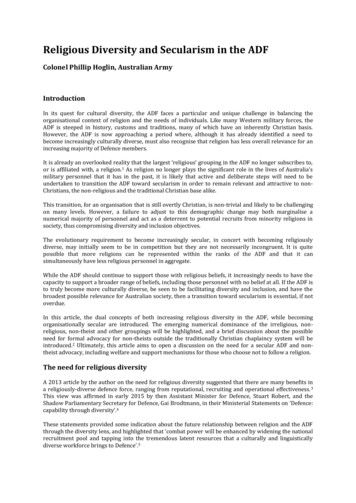
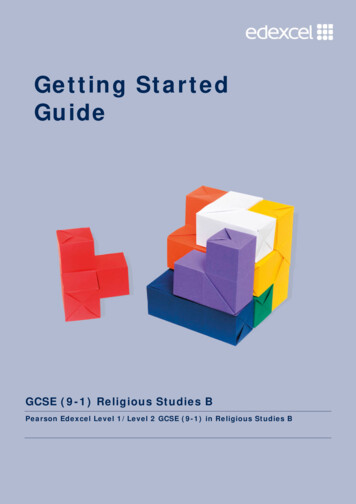
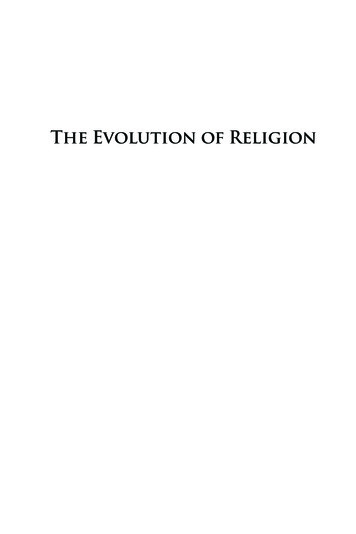
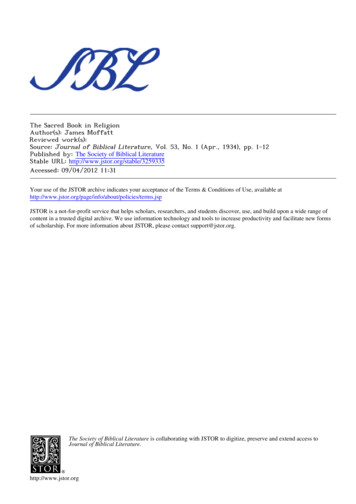
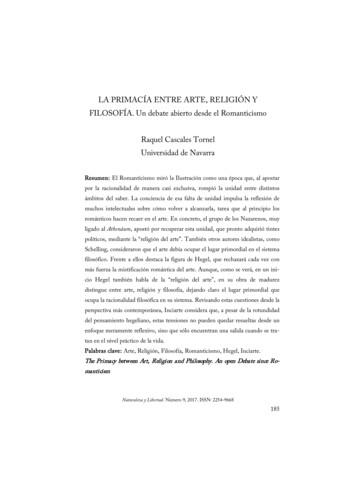
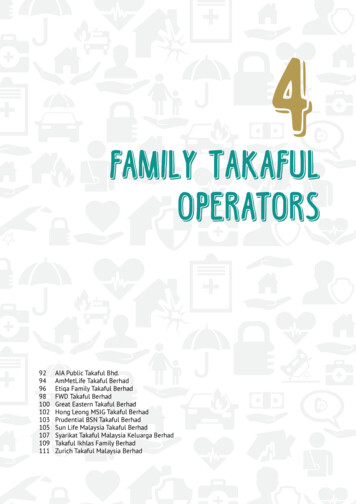
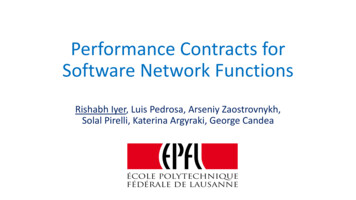
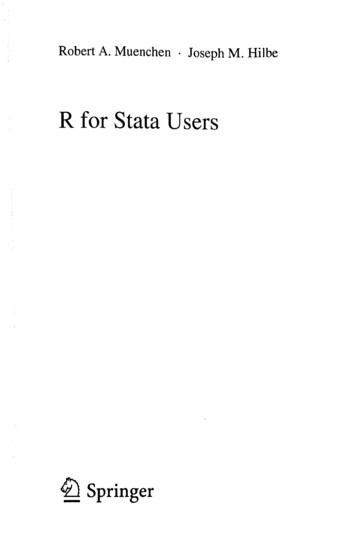

![Drawing the Human Head Burne Hogarth[English] - Internet Archive](/img/29/drawing-the-human-head-burne-hogarth-english.jpg)
